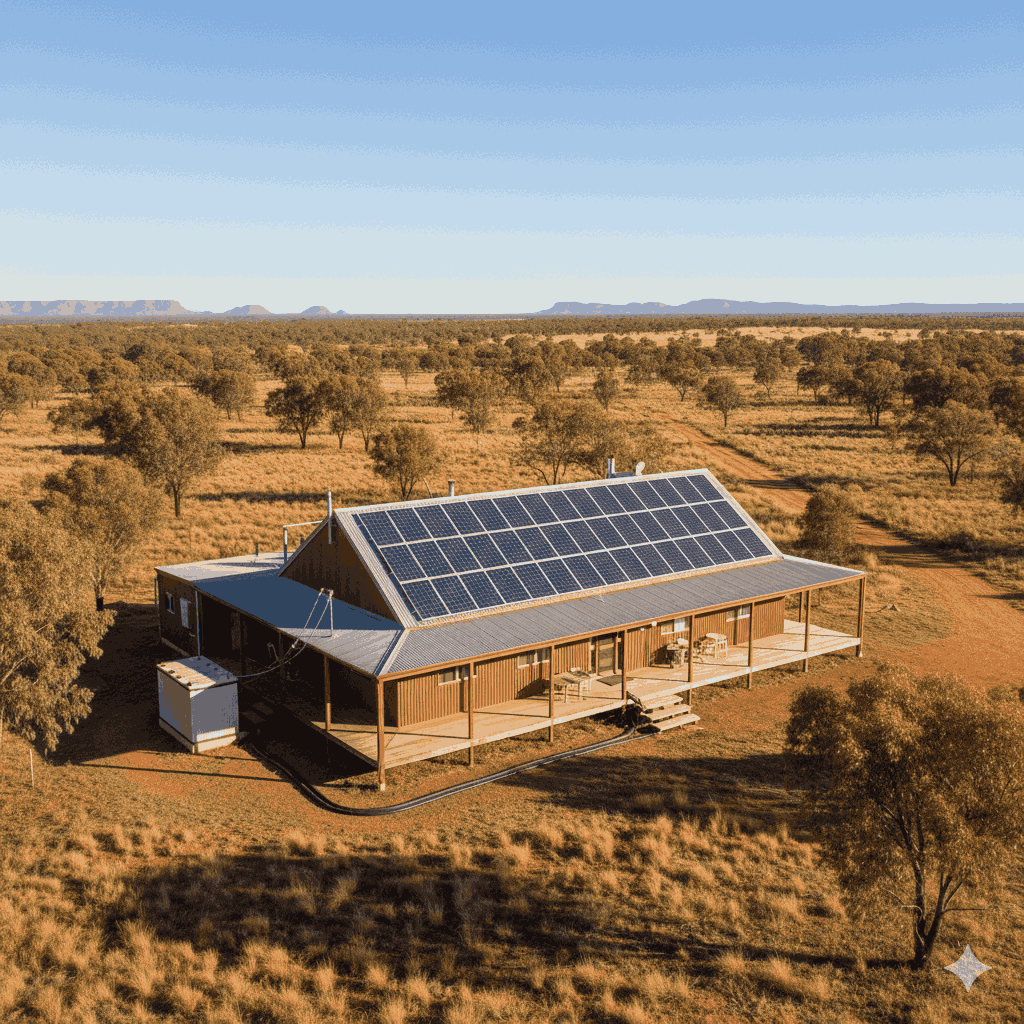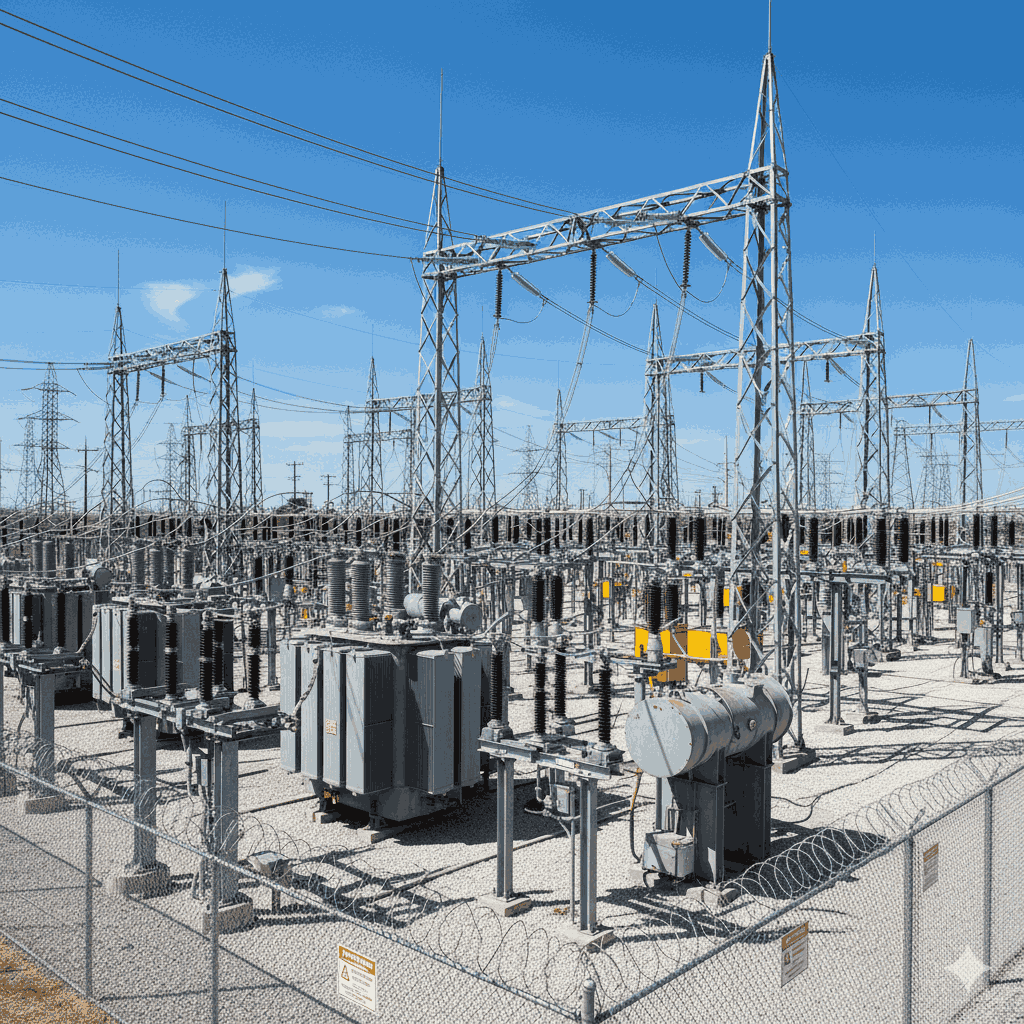In 2021, the electricity department switched off solar panels.
What made this move strange was that these solar panels were installed in people’s individual homes.
In 2016, South Australia experienced a power outage.
The demand on the electricity grid was greater than the supply, and it failed.
That experience left a bad taste in the mouths of residents.
Australia is a hot and sunny country. Residents fearing another massive outage at some future date prepared themselves.
People installed solar panels on their roofs.
Soon, homes needed less and less electricity. Especially during the hot days when air conditioning draws more electricity.
In 2021, they were producing so much electricity, the electricity board shut the panels down remotely. And this was fully legal.
To understand the peculiarities of this, we have to understand how electricity supply and grids work.
High/Low Demand & Storage
One of the biggest differences between electricity and other resources is that electricity cannot be stored.
Sure, we can store electricity in batteries. But that is a small portion compared to the amounts we actually need.
On an industrial scale, electricity cannot be stored.
So, it must be consumed as soon as it is produced.
That might sound simple to some, but it is not at all that way.
The demand for electricity goes up and down — across hours, days, weeks, months, and seasons.
In most places, the demand for electricity is higher during the day than at night. Working days need more power than weekends. Festive months might require more electricity than regular months.
In some cold places, winters might require more heating, therefore needing more electricity. Summers would need less power.
In others, summer-time air conditioning might need more power. Winters would need less power.
This means, power generating companies need to plan their output based on electricity demand. Predicting the ups and downs of this demand is a branch in itself.
Power generation companies, grids, etc spend vast amounts of money planning and predicting this demand.
But why?
Oversupply, Undersupply, and Tripping
In a grid, electricity generated must be consumed on the other side by consumers.
When that does not happen, too much electricity can increase the frequency of the AC current. This can cause a spike in voltage — and that can damage electrical devices.
So, to prevent the damage, the entire electricity grid has built-in protection measures. When the voltage goes too high, the protection trips and the power supply is cut off.
At the same time, the power generators start regulating and reducing their output.
This can take some time.
In the case of hydropower plants, it happens relatively fast. The same goes for wind power.
In the case of coal plants, it can take a while. Nuclear plants take even longer to reduce their output.
In short, if there is too much supply of electricity, the electric grid fails to deliver electricity to its users.
Interestingly, something similar happens when the demand is too high but the supply is not enough.
Then, too many consumers are trying to pull electricity from the grid. This causes the voltage to drop. Below a certain level, the voltage is harmful to devices.
Again, protection measures are in place. If it falls below a certain level, the protection trips and the power supply is lost.
Then, a cycle of increasing power generation starts. Once there is enough power in the grid, supply is restored.
This increase also takes place relatively quickly in the case of hydro and wind power. Slow in case of coal. Even slower in the case of nuclear power.
In most grids, the electricity is supplied by many different suppliers.
The same grid may have power plants that produce power from wind, sun, coal, natural gas, hydro, nuclear, geothermal, etc.
Each of these have their own characteristics. Some are very low cost. Some cost more.
Some are able to increase/decrease supply more easily, while others take a lot of time.
Exchange
What makes this ecosystem interesting is that there is an exchange for electricity.
Just like stock markets exist where buyers and sellers can trade in stocks, there also exist power exchanges.
Here the generating companies offer their capacity for sale. Buyers, which can include industries and other power distribution companies, line up to buy electricity capacity.
This kind of an exchange allows generators and consumers to get stable power trade.
So if one industry needs less electricity, they can buy less capacity. Someone else on the same grid might need it more, so they can instead buy this capacity.
This way, the generating company saves the effort of reducing its supply (which takes time and costs money).
The buying and selling of these capacities occurs months in advance.
But these cannot cover all sorts of minor increases and decreases in power demand. So there also exist smaller time frames that can be bought and sold.
One occurs a day before the electricity is to be delivered. These are usually blocks of an hour.
Even smaller chunks also exist (a few minutes to 15 min) that can be traded up to a few minutes before the power is to be delivered.
Costs
In the case of power-generating companies, there are two main kinds of costs.
Fixed costs and operating costs.
Fixed costs are one-time in nature. This comes when the power plant is being built.
Operating costs are recurring. These include fuel costs (in the case of coal, gas, nuclear, etc).
They also include other recurring costs like maintenance and repair costs. This cost also applies to clean energy sources like solar, wind, hydro, etc.
In the case of renewable power generation sources, the recurring costs are usually much lower, mostly repair and maintenance.
Investing
There are quite a few stocks in this space in India.
One of the first things to understand is the kind of company.
There are companies that only generate power. There are companies that only distribute power. And there are also companies that do both.
Companies that only generate power experience cycles in their revenues and profits. This is linked to the demand. Some periods in a year result in higher demand and therefore higher revenues.
Installed capacity is the total power-generating capacity of the power plant. It is expressed in MW, or megawatts.
Most plants are not able to make full use of their capacity.
Plant Load Factor (PLF) is the percent of the total capacity being used. A higher PLF means a company is more efficiently producing power.
The fuel also matters.
Coal power plants are affected by the numerous factors that impact coal prices. Similarly, the price of natural gas also impacts gas power plants.
Renewable energy companies are less affected since hydro, solar, and wind power do not cost extra.
Since companies in this space have to spend money building power plants much before they can start selling power, they often take big loans. This can affect the health of the company if not handled well.
So metrics like debt-to-equity ratio, interest rates, percentage of cash flow going towards paying existing loans, etc become crucial.
The customer buying the power matters too.
Many power plants sign direct deals with consumers (like huge factories). They experience stable revenues.
Companies that sell their power more often in exchanges see their revenues fluctuate a bit more.
Power generation and distribution is a fascinating field.
It is extremely vital to every country. And yet, it is not as well understood.
The power system is extremely well regulated. A small oversupply can cause disruption. So can an under-supply.
At the start of this write-up, there was a mention about how solar panels above homes were shut down.
There is a provision there that allows power grids to force a shutdown of people’s use of solar panels.
When the supply of electricity is too low, the grid is under threat. This is deemed a regional risk.
So, in such cases, they force residents to use power from the grid instead of their own solar panels.
Quick Takes
+ India’s unemployment rate fell to 5.2% in the July-Sept quarter (vs 5.4% in the previous quarter).
+ US President Trump hinted that the US may reduce tariffs on India in the future, and finalise a new trade deal.
+ RBI allowed banks and NBFCs to offer loans against silver jewellery and coins starting 1 Apr 2026, under new lending guidelines.
+ India’s retail inflation fell to 0.25% year-on-year in Oct (vs 1.44% in Sept).
+ India’s wholesale inflation fell to -1.21% year-on-year in Oct (vs 0.13% in Sept).
+ The central government approved the Export Promotion Mission, with a cost of Rs 25,060 crore along with Rs 20,000 crore for the Credit Guarantee Scheme for Exporters to provide collateral free credit to exporters.
+ India’s forex reserves fell $2.7 billion to $687.03 billion in the week that ended on 7 Nov.
+ Lenskart IPO listed on the stock exchanges at a discount of 1.74% on the issue price and closed 0.27% up at the end of the day.
+ Pine Labs IPO listed on the stock exchanges at a premium of 9.50% over the issue price and closed 13.52% up at the end of the day.
+ Groww IPO listed on the stock exchanges at a premium of 12% over the issue price and closed 31.33% up at the end of the day#
The information contained in this Groww Digest is purely for knowledge. This Groww Digest does not contain any recommendations or advice.
Team Groww Digest




